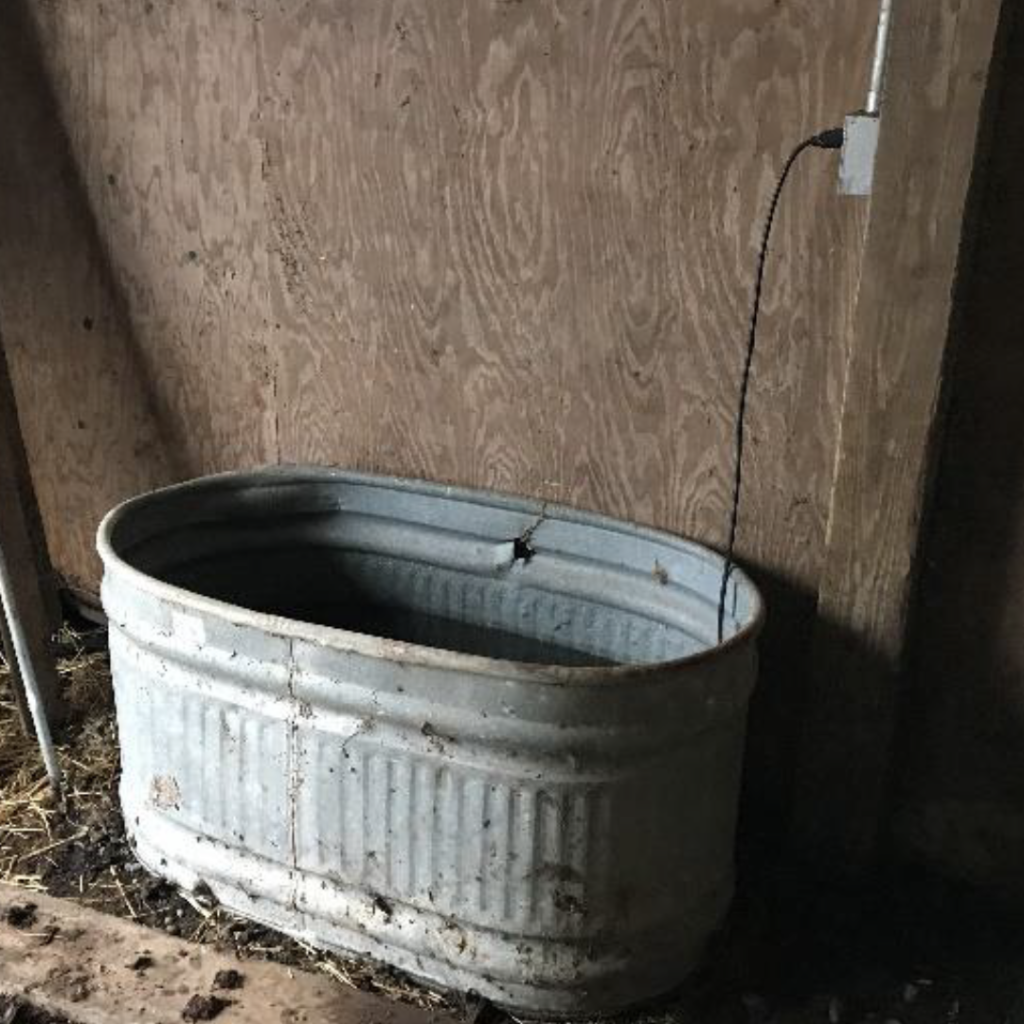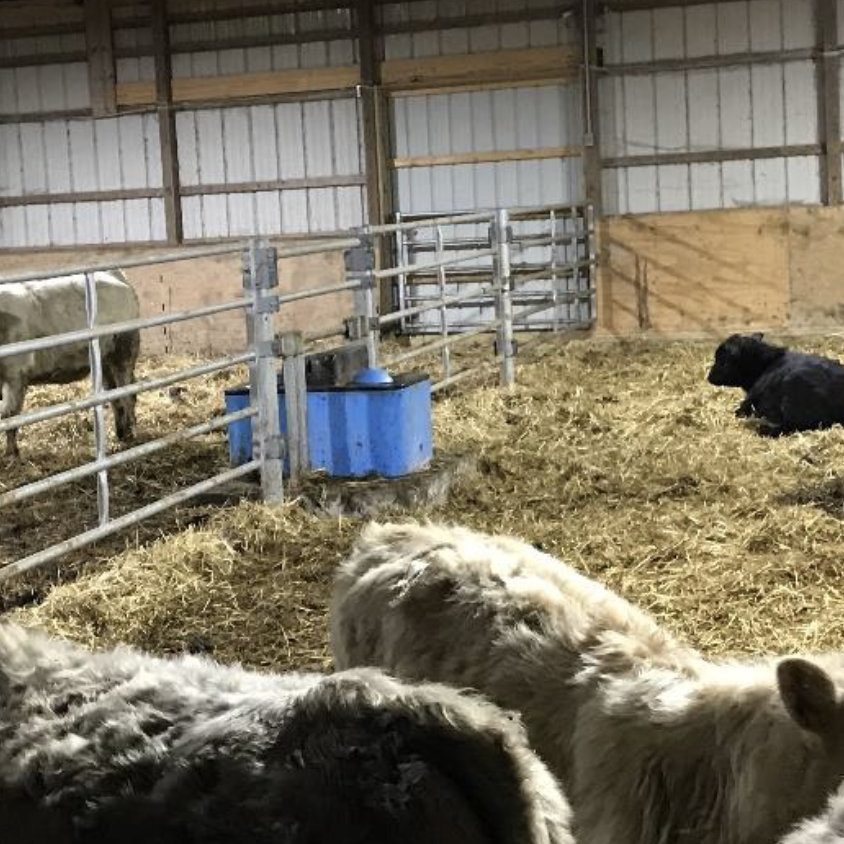Livestock Waterer Recommendations
Livestock Waterers
Energy-free livestock waterers are insulated so that heat from the ground is enough to prevent the water in the waterer from freezing. There are many versions of these for sale on the market and many farms have found them to be effective. In cases where insulation and ground-sourced heat is not enough, low-energy heating is available for some models. It is recommended that existing, un-insulated livestock waterers that require heaters be replaced with energy-free or low-energy livestock waterers.
No-cost energy assessments can help you identify what measures are best suited for your operations considering costs and expected benefits. Request an energy assessment by completing our interest form.

A 1,500-watt heated tank that should be replaced with an energy-free waterer.

An energy-free waterer that takes heat from the ground to keep water from freezing.

A high-insulation waterer for livestock that reduces energy needed to keep water from freezing.
Summary About Energy-Free Livestock Waterers
Well-insulated waterer with geotube. If heating is needed, include a thermostatically controlled heating element. |
|
| General Operational Requirements | Existing units over 250 Watts have a reasonable payback. |
| Potential Energy Savings (1) | 40-100% |
| Typical Simple Payback (2) | 4-15 years |
| Possible Barriers | Cost; geotube difficult to install if existing waterer on concrete pad. |
| Non-energy Benefits | Labor savings if filling stock tanks manually; labor savings due to removal of electric coil maintenance. |
1. “Potential Energy Savings” represents the potential savings as a percentage of the total energy use for each technology category. E.g., if livestock waterer heating as an end-use was 20% of a farmer’s electricity usage, and if the above table showed a Potential Energy Savings of 50%, then the net effect would be a 10% overall electricity energy savings (20% * 50% = 10%). An individual farmer can then predict the Economic Benefit through annual cost savings as 10% of their annual bill. So, if a farmer’s annual electricity bill is $10,000 then the potential cost savings for switching to energy-free waterers would be 10% * $10,000 = $1,000.
2. “Simple Payback” is defined as the installation costs divided by the potential energy cost savings. An individual farmer can then predict the Expected Implementation Cost by taking the cost savings from item #1 above and multiplying it by the Simple Payback for the Technology being investigated. So in this example, if energy-free waterers have a Typical Simple Payback of 5.0 years, then the estimated implementation cost would be $1,000 * 5.0 = $5,000.
